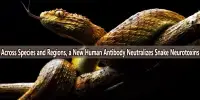Small plesiosaur fossils, long-necked marine reptiles from the dinosaur era, were discovered in the Sahara Desert of Morocco, a 100 million year old river system. This finding shows that some plesiosaur species, which were previously believed to be marine creatures, may have really resided in freshwater.
Plesiosaurs were ancient reptiles with small heads, long necks, and four long flippers. Mary Anning, a fossil researcher, discovered them for the first time in 1823. Plesiosaurs, as opposed to the Loch Ness Monster, were aquatic animals or were popularly believed to be. They served as inspiration for reconstructions of the Loch Ness Monster.
Now, researchers from Université Hassan II in Morocco, University of Bath, and University of Portsmouth in the UK have reported finding tiny plesiosaurs in an African river that dates back to the Cretaceous.
The fossils include teeth and bones from three-meter-long adults as well as an arm bone from a newborn that was just 1.5 meters long. They imply that these animals regularly inhabited freshwater habitats and subsisted there, sharing it with frogs, crocodiles, turtles, fish, and the enormous aquatic dinosaur Spinosaurus.
The plesiosaurs may have even spent their entire lives in freshwater, like modern river dolphins, according to these fossils, which indicate they were designed to dwell there.
Georgina Bunker, a student at the University of Bath, Nick Longrich from the Milner Centre for Evolution at the University of Bath, David Martill, Roy Smith, and Samir Zouhri from the University of Hassan II served as the paper’s lead authors.
The fossils include arm bones from immature juveniles, shed teeth, and vertebrae from the neck, back, and tail.
“It’s scrappy stuff, but isolated bones actually tell us a lot about ancient ecosystems and animals in them. They’re so much more common than skeletons, they give you more information to work with,” said Dr. Nick Longrich, corresponding author on the paper.
“The bones and teeth were found scattered and in different localities, not as a skeleton. So each bone and each tooth is a different animal. We have over a dozen animals in this collection.”
The location of an animal’s death can be determined by its bones, but its living environment can be determined by its teeth, which were lost while the animal was still alive.
It’s scrappy stuff, but isolated bones actually tell us a lot about ancient ecosystems and animals in them. They’re so much more common than skeletons, they give you more information to work with. The bones and teeth were found scattered and in different localities, not as a skeleton. So each bone and each tooth is a different animal. We have over a dozen animals in this collection.
Dr. Nick Longrich
Additionally, the teeth exhibit severe wear, similar to that of the fish-eating dinosaur Spinosaurus discovered in the same beds.
By chipping their teeth on the armored fish that dwelt in the river, the plesiosaurs were likely consuming the same food, according to the experts. This suggests they were frequent users of the river rather than just passing through.
The abundance of plesiosaur fossils in the river suggests that’s improbable, despite the fact that aquatic creatures like whales and dolphins sometimes go up rivers, either for food or because they’re lost. The ability of the plesiosaurs to endure both fresh and salt water, like some whales, such the beluga whale, is a more feasible hypothesis.
It’s also conceivable that, like contemporary river dolphins, the plesiosaurs lived in the river permanently. Due to their little size, plesiosaurs could have hunted in shallow rivers, and the fossils reveal an extraordinary diversity of fish species.
Dr. Longrich said: “We don’t really know why the plesiosaurs are in freshwater.”
“It’s a bit controversial, but who’s to say that because we paleontologists have always called them ‘marine reptiles’, they had to live in the sea? Lots of marine lineages invaded freshwater.”
In the Ganges River, the Yangtze River, and twice in the Amazon River, freshwater dolphins underwent at least four evolutionary cycles. Lake Baikal in Siberia is home to a species of freshwater seal, suggesting that plesiosaurs may have also evolved to live in freshwater.
The plesiosaurs are little plesiosaurs that are frequently discovered in brackish or freshwater in other parts of England, Africa, and Australia. They are members of the family Leptocleididae. Additionally, other plesiosaurs, such as the long-necked elasmosaurs, have been discovered in fresh or brackish seas in China and North America.
There were plesiosaurs for more than 100 million years, and they were a diversified and versatile group. The authors speculate that they may have frequently infiltrated freshwater to various degrees based on what they have discovered in Africa and what other scientists have discovered elsewhere.
“We don’t really know, honestly. That’s how paleontology works. People ask, how can paleontologists know anything for certain about the lives of animals that went extinct millions of years ago? The reality is, we can’t always. All we can do is make educated guesses based on the information we have. We’ll find more fossils. Maybe they’ll confirm those guesses. Maybe not.”
“It’s been really interesting to see the direction this project has gone in,” said lead author Georgina Bunker.
A single bone served as the study’s starting point as an undergraduate project, but when more plesiosaur fossils were discovered throughout time, a clearer picture of the animal steadily emerged. The new discovery increases the Cretaceous’ diversity in Morocco.
Said Dr. Samir Zouhri, “This is another sensational discovery that adds to the many discoveries we have made in the Kem Kem over the past fifteen years of work in this region of Morocco. Kem Kem was truly an incredible biodiversity hotspot in the Cretaceous.”
“What amazes me,” said coauthor Dave Martill, “is that the ancient Moroccan river contained so many carnivores all living alongside each other. This was no place to go for a swim.”
What does this suggest, though, in terms of the likelihood of anything like a Loch Ness Monster?
It makes sense on a certain level. Plesiosaurs lived in freshwater habitats as well as the sea. However, the fossil record also implies that the final plesiosaurs perished 66 million years ago, around the same time as the dinosaurs, after about 150 million years.
















